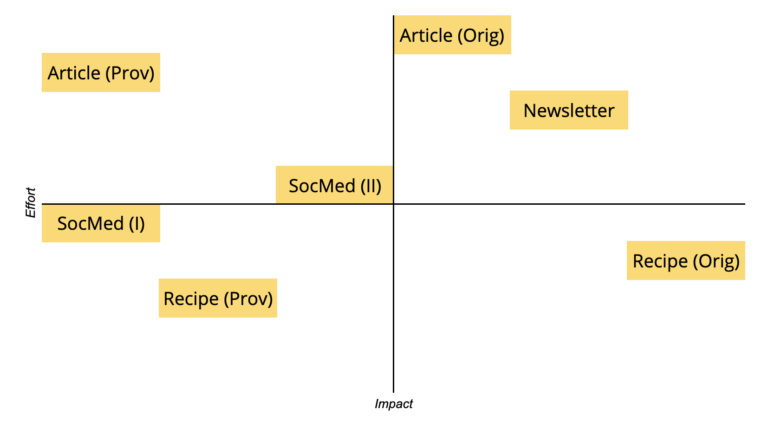Agile Practices: The Marketing Team Tries Sprints, Part III
Let’s do a deep dive
To recap, here are the Marketing Team’s average monthly deliverables by category during the trial:

And here are the Team’s performance metrics before and after the trial:

Outcomes
Here are the percent-changes for each area the Team measured before and after the trial:

Based on the above outcomes and measured results, the group could see where their efforts paid off and where they could change how they approach their users. For example, while site visits increased a relatively small amount (1%), the time people spent on the site, in particular on articles – where most of the organization’s thought leadership reaches their audience – increased dramatically. This led to some great conversations on why the numbers went up so much and what they could do to keep it going.
What’s more, every key area improved, which provided the group with much to discuss and plan for. Questions like; where they should focus first, and what they should do, quickly surfaced. Another big question was; should they continue to work in the Sprint format, or would they return to how they worked prior to the trial.
This is when I spoke up. Playing the role of Agile Expert, I explained using the Sprint process could provide answers to their questions – one of the primary benefits of using Agile; it can help groups sort out what to do and when to do it.
I will go into what I proposed and how we continued to work in the Sprint process, however, what’s to come may differ from a more traditional approach to Agile Sprints – one many people involved with software development may disagree with. If so, I’ll have another intriguing article for you soon.
Meanwhile…
Here is the Effort-Impact matrix the team created:

We decided, although creating original articles would be the most impactful of all our options, they took considerably more effort to create than articles where we partnered with an author or subject-matter expert. And while the group agreed newsletters were quite effective over the trial, our efforts should be focused on those items in the top left of the graph.
We then broke down the work into 2-week increments; basically planning 10-day Sprints. This allowed the team to see – using a calendar – when they would complete the deliverables. They would focus on generating articles, and given the team’s output during the trial, they expected to post 4 new articles every 10 days (2 per week); 24 over the next three months.
Everyone understood articles alone would not bring the expected overall results. Ultimately, the Marketing team was responsible for many products and services, user engagement on the site was only one of them. Management would expect attention to be paid wherever needed.
Summary
Over time and by providing visibility into strategic outcomes, the Marketing Team helped shape what they would focus on and how best to serve their users – being proactive with management to ensure the overall plan was implemented.
Applying these Agile practices helped everyone better understand how what they were doing impacted the business, but more importantly, how it was improving user engagement. Understanding the process and how best to fit it within the organization, to meet the needs of the business and individuals, as applied here with the Marketing Team, will help; the above case study shows the possibilities.
Thank you for reading this series. I hope you enjoyed reading it as much as I did writing, and living it.
If you missed the other (two) parts of the series, please see these posts:
Agile Practices: The Marketing Team Tries Sprints
Agile Practices: The Marketing Team Tries Sprints, Part II